For years I have had repeated requests from many Brethren, both in England and in America, asking me to gather various papers and addresses on Masonic themes into a form more convenient and accessible.
The present selection is not complete, but it may serve the purpose desired, and perhaps give cumulative effect to words spoken at different times and places, at home and abroad, in the service of our great and gentle Craft.
I inevitably, in a series of addresses covering ten years or more, there will be some repetition of idea, if not of phrase; but it has seemed best to let them stand as they were written, the more because the great truths need to be emphasized with many variations of insight and accent.
During the period covered by these papers my little book, The Builders, was written, and is still busy at its work in many lands and four or five languages; and its readers will find much that is familiar in these pages.
Freemasonry appeals to me, first, by its fellowship; and next to the home and the House of God, it is the most blessed influence in my life.
Its simple and profound faith, its wise and practical philosophy—uniting the wisdom of love with the love of wisdom—illumine my mind, as its genius of fraternity warms my heart.
But still more Masonry appeals to me as an agency for the organization of moral faith, practical brotherhood, and social idealism, the worth and power of which we have not yet realized.
Most of the words of this book were spoken while the Great War and the Little Peace were sweeping over us, leaving disaster, desolation, and disillusionment in their wake.
They have gone, those years, dark, dreadful, and confused; but, by the mercy of God, the ideals set forth in these pages still glow and abide in the heart of the speaker; and he makes bold once more to commend them to his fellow-workmen on the Temple.
In a day when the brotherhood of the world is broken, our ancient and noble Craft has an opportunity, the like of which it has never known before, to use its influence and power to spread that fraternal righteousness without which the future will be as dark as the past.
For the rest, my gratitude is due to Brother H. L. Haywood, editor of The Builder, who has kindly allowed me to use certain papers which appeared in its pages when I had the honor of being its first editor.
Also to Brother Douglas Martin, of the Detroit Masonic News, for the use of a number of articles which appeared in his bright and forward-looking journal; as well as for personal kindnesses which make a rosary in my memory.
To all my Brethren everywhere, the very thought of whom is like music, I send greeting, blessing, and abounding goodwill.
Joseph Fort Newton
Church of the Divine Paternity, New York City.
About the author

Joseph Fort Newton (1880–1950) was an American Baptist minister.
Newton received the third degree of Freemasonry on May 28, 1902 in Friendship Lodge No. 7, Dixon, Illinois, later affiliating with Mt. Hermon Lodge No. 253, Cedar Rapids, Iowa.
He also served as Grand Chaplain of the Grand Lodge of Iowa from 1911 to 1913, and Grand Prelate of the Grand Encampment of Knights Templar.
The Builders has been called “an outstanding classic in Masonic literature offering the early history of Freemasonry.”
Rev. Newton authored over 30 books, perhaps his most famous being The Builders: A Story and Study of Freemasonry, published in 1914, and translated into six different languages.
The Builders is still regarded as one of the best books on the topic. The Men’s House was published in 1923, and his autobiography, River of Years, in 1944.


The Builders
By: Joseph Fort Newton
This anthology is a thorough introduction to classic literature for those who have not yet experienced these literary masterworks.
For those who have known and loved these works in the past, this is an invitation to reunite with old friends in a fresh new format.
From Shakespeare s finesse to Oscar Wilde s wit, this unique collection brings together works as diverse and influential as The Pilgrim s Progress and Othello.
As an anthology that invites readers to immerse themselves in the masterpieces of the literary giants, it is must-have addition to any library.
Recent Articles: in this series
 Book Intro: The Secret Doctrine Explore the profound synthesis of science, religion, and philosophy in H.P. Blavatsky's "The Secret Doctrine." Discover the true depth of Theosophy beyond the oversimplified term "Esoteric Buddhism" and uncover the universal wisdom that transcends religious boundaries. A compelling introduction to Theosophical literature and its broader, esoteric truths. |
 Book Intro - The craftsman and freemason's guide Dive into the enigmatic world of Freemasonry with Cornelius Moore's comprehensive guide. Uncover the symbolic rituals, trace the fraternity's historical roots, and gain a deeper understanding of this age-old society. Perfect for Freemasons and curious readers alike. Unlock the secrets of Freemasonry today! |
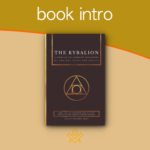 Unravel the secrets of the ancient Egyptian wisdom with our comprehensive guide to the Kybalion, by Three Initiates. Discover its influence on modern thought, the controversies surrounding it, and its seven profound Hermetic principles. Unlock the power of these timeless teachings to transform your understanding of life's mysteries. |
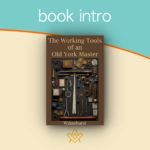 Book Intro - The Working Tools of an Old York Master by Wilmshurst Unlock the Secrets of Freemasonry! Dive into the profound symbolism of 'The Working Tools of an Old York Master.' Discover the hidden meanings behind the square, compass, plumb line, and more. Embark on a transformative journey of personal growth and spiritual enlightenment. Uncover the ancient wisdom that has shaped generations of Masons. |
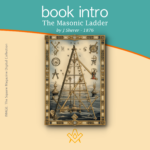 Book Intro - The Masonic Ladder by J Sherer Unlock the mysteries of Freemasonry with "The Masonic Ladder" by J. Sherer - - 1876. This 19th-century guidebook takes readers on a journey through the steps of the Masonic ladder, from the basic principles of the Entered Apprentice to the highest degree of the Sovereign Grand Inspector General. Discover the symbolism, allegory, and values of Freemasonry in this timeless classic. |
 Book Intro - The London mason in the seventeenth century The London Mason in the Seventeenth Century by Douglas Knoop offers a comprehensive examination of the lives and work of masons in the bustling city of London during the seventeenth century. The book delves into the intricacies of their craft, the socioeconomic and political forces that influenced their profession, and the role they played in shaping the architectural landscape of London. |
 Book Intro - History of Freemasonry, Gould, Robert Freke The History of Freemasonry is a comprehensive overview of the origins, development, and evolution of Freemasonry from its ancient roots to the modern era. The book explores the fascinating history of one of the oldest and most mysterious organisations in the world, which has been the subject of much speculation and curiosity over the centuries. - by Robert Freke Gould |
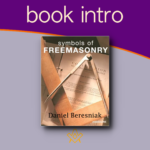 Book Intro - Daniel Beresniak Symbols Of Freemasonry This book is a collection of the symbolic images which Freemasons encounter on their journeys of transformation.' The texts and illustrations form an intimate dialogue whose subject is Freemasonry, and which casts light on the relationship between dreams and reality, reason, intuition and imagination. |
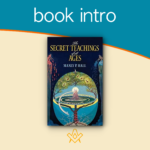 Book Intro - The Secret Teachings of All Ages by Manly P Hall The Secret Teachings of All Ages by Manly P Hall is a comprehensive and in-depth exploration of the various esoteric and occult traditions that have shaped human history. The book covers a wide range of subjects including alchemy, astrology, mysticism, and secret societies, and provides detailed explanations of the underlying principles and concepts. |
 Book Intro - Duncan's Masonic Ritual and Monitor Duncan's Masonic Ritual and Monitor is an impression of the Old York Rite published in New York in 1866. |
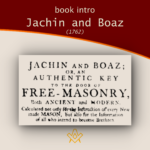 Book Intro - Jachin and Boaz (1762) Thirty two years after Samuel Prichard's Masonry Dissected (1730) a second detailed exposure was published Jachin and Boaz (1762) attributed to the same author, and met with equal distain by Freemasons of the time. However, these exposures offer the masonic historian an invaluable view in to how freemasonry was conducted during its early formation |
 Book Intro - Three Distinct Knocks (c.1760) Giving an exact account of all their proceedings in making a brother, with the three obligations or oaths belonging to the first second, and third degrees of masonry, viz. The entered apprentice, fellow-craft, and master-mason: with the obligating on belonging to the chair, and the grip and word. |
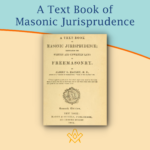 Book Intro - A Text Book of Masonic Jurisprudence An introduction to Albert Mackey's seminal work on Masonic Jurisprudence – the theory or philosophy of Masonic law. The Foundations of Masonic Law are to be found in the Landmarks, or Unwritten Law, and in the Ancient Constitutions, or the Written Law. These constitute the subject matter of the book. |
 Book Intro - The Perfect Ceremonies Of Craft Masonry 1871 A beautiful example of a the rituals, produced in a Medieval illuminated script style. Facsimiles still exist of this illustrated ritual book, of which the most authentically produced version is that available from the Scottish Rite Masonic Book Club. |
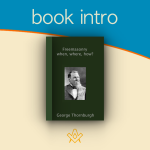 Book Intro – Freemasonry; when, where, how? Introduction to Freemasonry; when, where, how? By George Thornburgh |
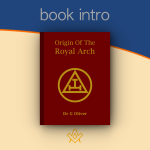 Book Intro - Origin Of The Royal Arch An introduction to the Origin of the Royal Arch, through the eyes of the English nineteenth century masonic author Dr G Oliver (1782–1867) |
 Book Intro – Symbolical Masonry Symbolical Masonry is a treasure-house of Masonic lore, including discussions of key concepts of the first three degrees, along with an extensive study guide. |
 This month we look at – 'A portrait gallery, with biographical sketches of prominent freemasons throughout the United States' |
 Extracted and abridged from The Mystic Tie: Or, Facts and Opinions, Illustrative of the Character and Tendency of Freemasonry By Albert Mackey, |
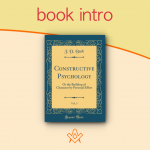 Book intro - Constructive Psychology The introduction to Constructive Psychology or The Building Of Character By Personal Effort by J D Buck a masonic author |
 book intro - Cagliostro: the splendour and misery of a master of magic Preface to the book by William Rutherford Hayes; Cagliostro: the splendour and misery of a master of magic |
 book intro - Origin of the Rosicrucians and the Free-Masons Historico-Critical Inquiry into the Origin of the Rosicrucians and the Free-Masons – Thomas De Quincey |
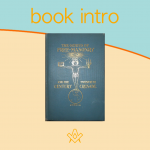 Book Intro - The Genius of Freemasonry The Genius of Freemasonry: “Has any brother anything to offer for the good of Masonry?” The following pages are the author’s answer to that question. |
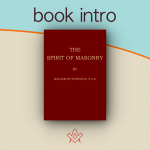 Book Intro - The Spirit of Masonry An essential source for anyone interested in exploring the inner mysteries of the Masonic Fraternity. |
 Book intro - History of Freemasonry Introduction to a classic masonic book by J. G. Findel, History of Freemasonry published 1866 |
 The Book of Constitutions for the Ancient Grand Lodge or Ahiman Rezon |
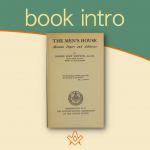 A short introduction to The Men's House, a collection of masonic papers and addresses |
 This is a general survey of Masonic origins, history and philosophy. It was at one time given to every new Mason in Iowa. |
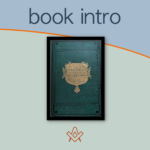 Book Intro - The Discrepancies of Freemasonry Written almost 150 years ago, this book contains wisdom still relevant today. |
 Book Intro - The Principles of Masonic Law "The first great duty, not only of every lodge, but of every Mason, is to see that the landmarks of the Order shall never be impaired". |
 Published in 1911, this fascinating book is equally relevant for the 21st century Mason with an interest in the more mystical side of Freemasonry. |
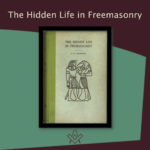 Book Intro - Hidden Life of Freemasonry Introduction to The Hidden Life in Freemasonry (1926) by Charles Webster Leadbeater |
 Book Intro - The Symbolism of Freemasonry Introduction to a classic masonic book; The Symbolism of Freemasonry: Illustrating and Explaining Its Science and Philosophy, its Legends, Myths and Symbols. |
 Book Intro - The Meaning of Masonry This is the Introduction to The Meaning of Masonry, a set of essays which discuss the esoteric side of Masonry |
 Book Intro - Illustrations of Masonry Introduction to Illustrations Of Masonry by William Preston (1742-1818) |
Recent Articles: The Builders by Joseph Fort Newton
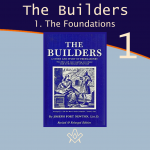 The Builders – 1 The Foundations Chapter 1. The Foundations Explore an outstanding classic in Masonic literature - an exposition of the early history and symbolism of Freemasonry – from the foundations upwards. |
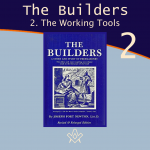 The Builders – 2 The Working Tools Chapter 2. The Working Tools - Explore an outstanding classic in Masonic literature - an exposition of the early history and symbolism of Freemasonry – from the foundations upwards. |
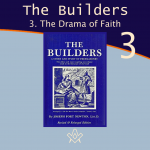 The Builders – 3 The Drama of Faith Chapter 3. The Drama of Faith - Explore an outstanding classic in Masonic literature - an exposition of the early history and symbolism of Freemasonry – from the foundations upwards. |
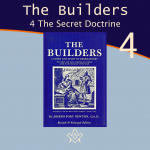 The Builders – 4 The Secret Doctrine Chapter 4. The Secret Doctrine - Explore an outstanding classic in Masonic literature - an exposition of the early history and symbolism of Freemasonry – from the foundations upwards. By Joseph Fort Newton |
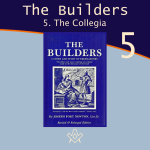 Chapter 5. The Collegia - If the laws of building were secrets known only to initiates, there must have been a secret Order of architects who built the temple of Solomon. Who were they? |
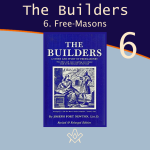 The Builders – 6 The Free-Masons Chapter 6. the Free-Masons - an examination into the history of the medieval guilds, their charges and regulations that form the base for the allegories and symbols in our modern versions of masonic craft ritual. By Joseph Fort Newton |
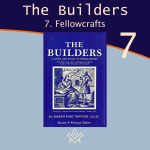 Chapter 7. the Fellowcrafts - an examination into the history of the medieval guilds, their charges and regulations that form the base for the allegories and symbols in our modern versions of masonic craft ritual. By Joseph Fort Newton |
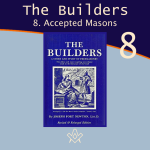 The Builders – 8 Accepted Masons Chapter 8. Accepted Masons - an examination into the history of accepted masons, and why did soldiers, scholars, antiquarians, clergymen, lawyers, and even the nobility ask to be accepted as members of the order of Free-masons? By Joseph Fort Newton |
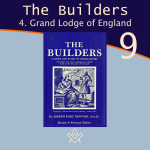 The Builders – 9 Grand Lodge of England Chapter 9. Grand Lodge of England - From every point of view, the organization of the Grand Lodge of England, in 1717, was a significant and far-reaching event. By Joseph Fort Newton |
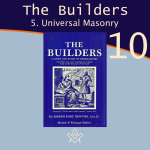 The Builders – 10 Universal Masonry Chapter 10. Universal Masonry - Henceforth, the Masons of England were no longer a society of handicraftsmen, but an association of men of all orders and every vocation, as also of almost every creed, |
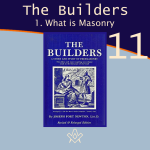 The Builders – 11 What is Masonry Chapter 11 "Masonry is the activity of closely united men who, employing symbolical forms borrowed principally from the mason's trade and from architecture, work for the welfare of mankind, striving morally to ennoble themselves and others, and thereby to bring about a universal league of mankind, which they aspire to exhibit even now on a small scale." |
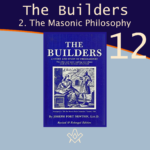 The Builders – 12 The Masonic Philosophy Chapter 12 When we look at Masonry in this large and mellow light, it is like a stately old cathedral, gray with age, rich in associations, its steps worn by innumerable feet of the living and the dead—not piteous, but strong and enduring. By Joseph Fort Newton |
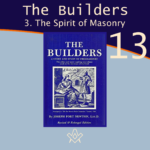 The Builders – 13 The Spirit of Masonry Chapter 13 Masonry is Friendship—friendship, first, with the great Companion, of whom our own hearts tell us, who is always nearer to us than we are to our-selves, and whose inspiration and help is the greatest fact of human experience. |
masonic knowledge
to be a better citizen of the world
share the square with two brothers

click image to open email app on mobile device










